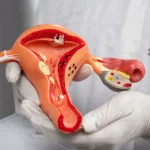
Introduction
Ovarian stimulation is one of the most important phases of IVF. Through fertility medications, the ovaries are encouraged to produce multiple eggs instead of the single egg that develops naturally each month. The choice of stimulation protocol can greatly influence outcomes.
Why Ovarian Stimulation Matters
The more eggs retrieved, the higher the chances of creating healthy embryos. However, overstimulation carries risks, so finding the right balance is key.
Types of Ovarian Stimulation Protocols
1. Long Protocol (Agonist):** Uses GnRH agonists to suppress hormones before stimulation.
2. Antagonist Protocol:** Uses GnRH antagonists to prevent premature ovulation; often shorter and more comfortable.
3. Microdose Flare Protocol:** Often used for women with low ovarian reserve.
4. Natural Cycle IVF:** Minimal medication; retrieves the naturally selected egg.
Medications Used
- Gonadotropins (FSH, LH): Stimulate follicle development.
- GnRH Agonists/Antagonists: Prevent premature ovulation.
- HCG or Trigger Shot: Matures eggs before retrieval.
Individualized Protocols
The best protocol depends on factors such as age, ovarian reserve (AMH, FSH, AFC), medical history, and prior IVF response. Personalized medicine is at the heart of successful stimulation.
Risks of Ovarian Stimulation
The main risk is ovarian hyperstimulation syndrome (OHSS), which can cause bloating, nausea, or, in rare cases, more severe symptoms. Modern protocols significantly reduce this risk.
Patient Story
Lina, age 29, was concerned about side effects of IVF medications. With an antagonist protocol tailored to her AMH levels, she retrieved 12 eggs and achieved a healthy pregnancy. She shared: “The individualized approach gave me confidence and minimized my discomfort.”
FAQs
Q: How long does ovarian stimulation take?
Ans. Usually 8–12 days.
Q: Will I feel side effects?
Ans. Some women report bloating or mood changes, but most tolerate medications well.
Q: Can protocols be adjusted mid-cycle?
Ans. Yes, doctors can modify doses depending on response.
Conclusion
Ovarian stimulation is a crucial step in IVF. By tailoring protocols to each patient’s unique biology, clinics like Surrogacy4All optimize outcomes while minimizing risks.
Explore your fertility options
Contac – info@surrogacy4all.com | Call – 1-212-661-7177

Rashmi Gulati
Rashmi Gulati, MD, provides innovative, individualized health care that nurtures mind, body, and spirit. Since 2004 she has been the medical director at Patients Medical, where she delivers comprehensive personalized health care, treating each patient as a respected, unique individual. Through their integrative health care center in the heart of Manhattan, Dr. Gulati and her colleagues have become premier care providers serving patients locally and throughout the world.





